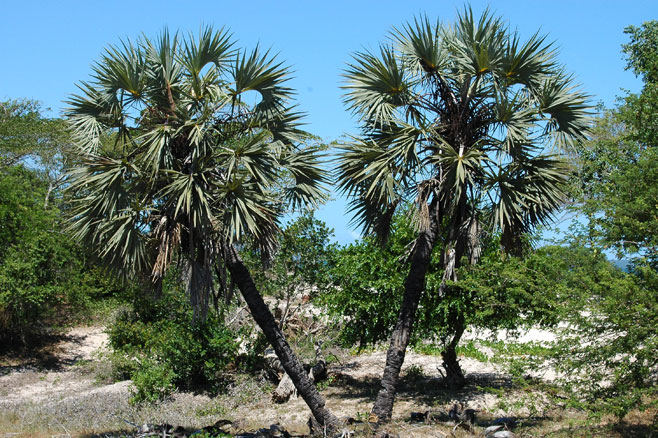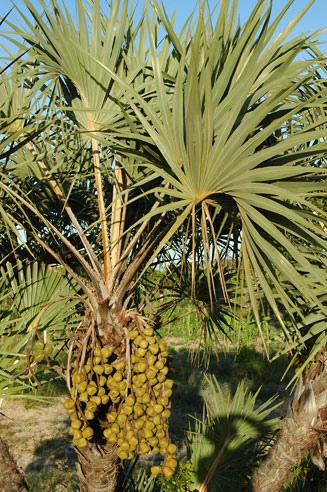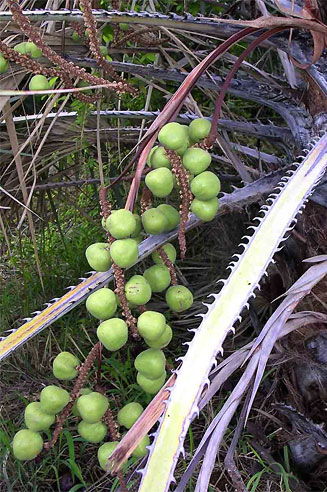|
Hyphaene coriacea (Lala palm)
[= Hyphaene natalensis]
Lalapalm [Afrikaans]; iLala [Zulu]; liLala
[Swazi]; nnala [Tsonga]; mulala [Venda]
Life
> eukaryotes >
Archaeoplastida >
Chloroplastida
>
Charophyta > Streptophytina > Plantae (land plants)
> Tracheophyta (vascular plants) > Euphyllophyta > Lignophyta (woody plants)
> Spermatophyta (seed plants) > Angiospermae (flowering
plants)
> Monocotyledons > Order: Arecales > Family:
Arecaceae
 |
|
Hyphaene coriacea, Inharrime, Mozambique. [photo John E. Burrows ©] |
 |
 |
|
Hyphaene coriacea, Inharrime, Mozambique. [photo John E. Burrows ©] |
Hyphaene coriacea, Malilangwe Wildlife
Reserve, Zimbabwe. [photo Colin Wenham ©,
Flora
of Zimbabwe] |
 |
|
Hyphaene coriacea, Levasflor,
Cheringoma, Sofala, Mozambique. [photo M Coates Palgrave ©,
Flora of Mozambique] |
This is quite a small palm growing from 3-9 m high whereas
Hyphaene petersiana grows to 18 m
high.
Distribution and habitat
Occurs in lowland regions of KwaZulu-Natal, Swaziland, Mpumalanga, Limpopo,
Mozambique and southern Zimbabwe. The distribution does not overlap with that of
Hyphaene petersiana, which is the other Hyphaene species native to
southern Africa.
Ecological interactions
- Fruit are eaten by:
- Leaves and shoots are eaten by:
- Acts as a roosting and nesting site for:
Uses by humans
- Mats, hats and baskets are made from the
leaves.
- The hard white kernal of the seed, sometimes
termed vegetable ivory, is carved into small
ornaments and buttons.
- Sap is tapped from the growing tip of the
stem. This involves cutting away the growing tip
and basal leaves and then making an incision
into which a leaf stalk is placed that acts as a
spout, sending the oozing liquid into a
container attached to the stem. A hat-like cover
is placed over cut-off tip for protection and to
keep it moist. An average sized palm produces
about 68 litres of liquid but unfortunately the
tapping process also kills the palm. The sap
ferments to palm wine termed busulu in
northern KwaZulu-Natal. The wine can then be
distilled to a spirit with a much higher alcohol
concentration. Typically, every 20 litres of
wine produces 2 litres of spirit.
References
- Palgrave, K.C. and Palgrave, M.C. 2002. Trees of Southern Africa. 3rd
Edition. Struik Publishers, Cape Town.
- Palmer, E. and Pitman, N. 1972. Trees of Southern Africa covering all
known indigenous species in the Republic of South Africa, South-West Africa,
Botswana, Lesotho and Swaziland. Volume 1. A.A. Balkema, Cape
Town.
- van Wyk, B. and van Wyk, P. 1997. Field Guide to Trees of Southern
Africa. Struik Publishers, Cape Town.
|
